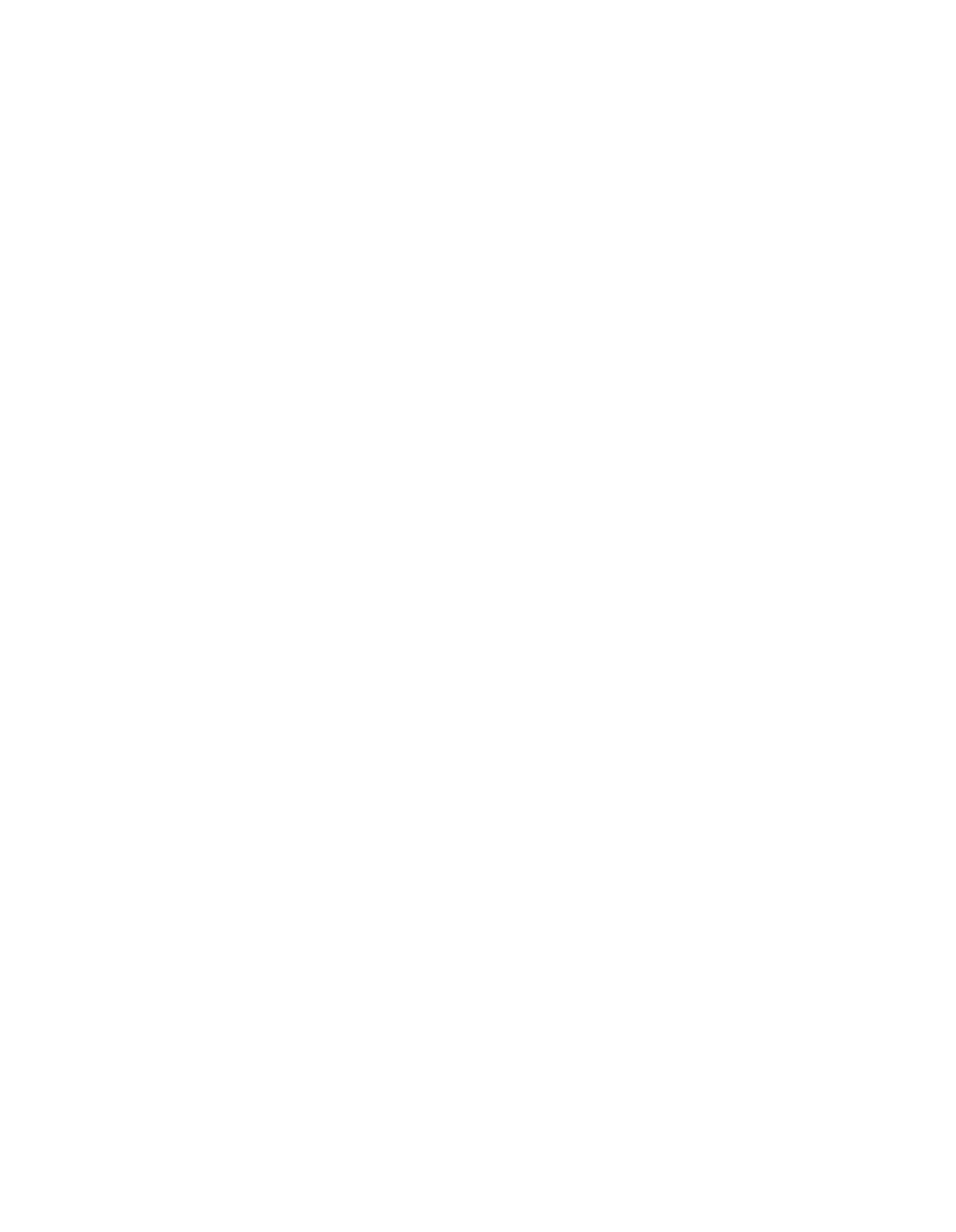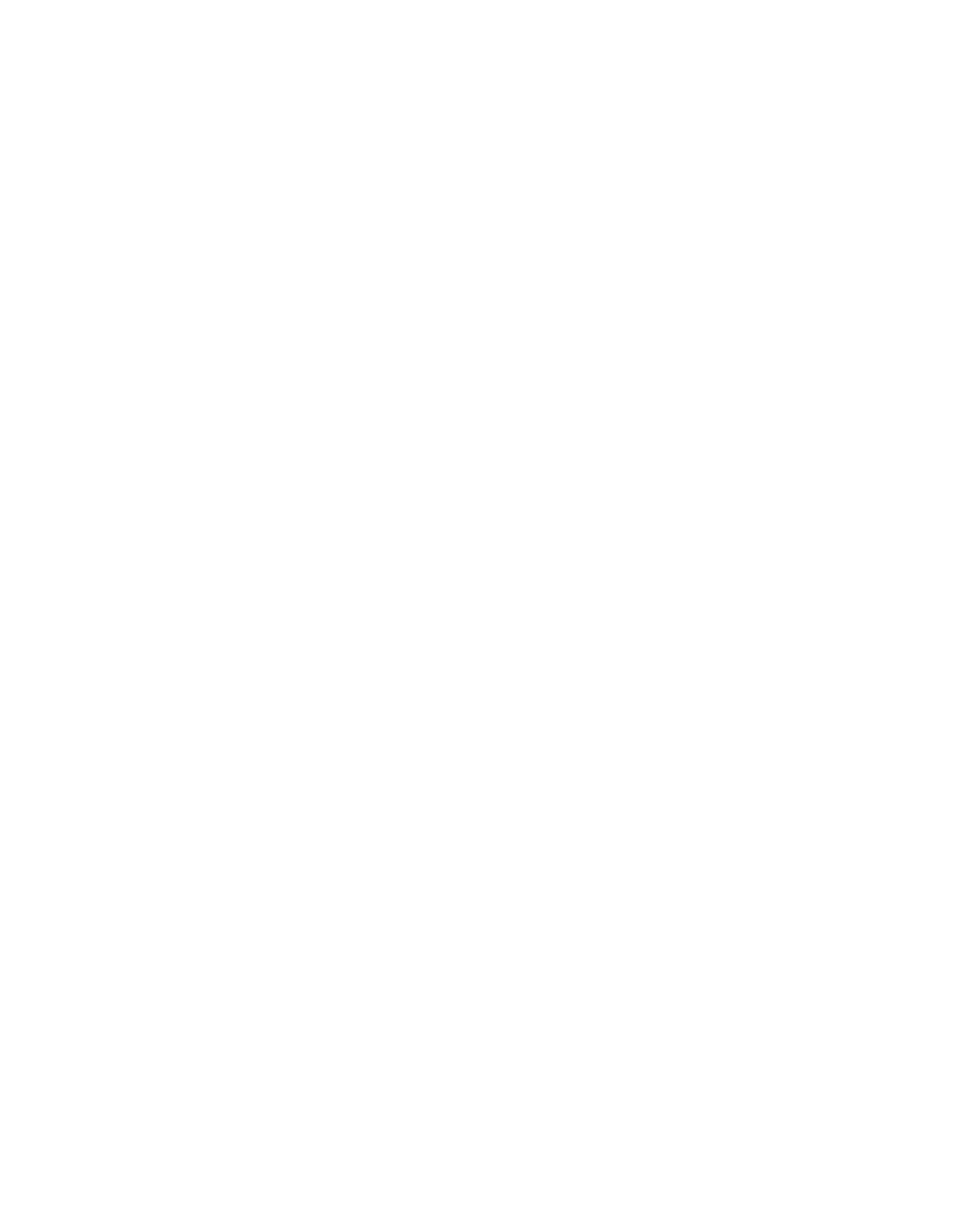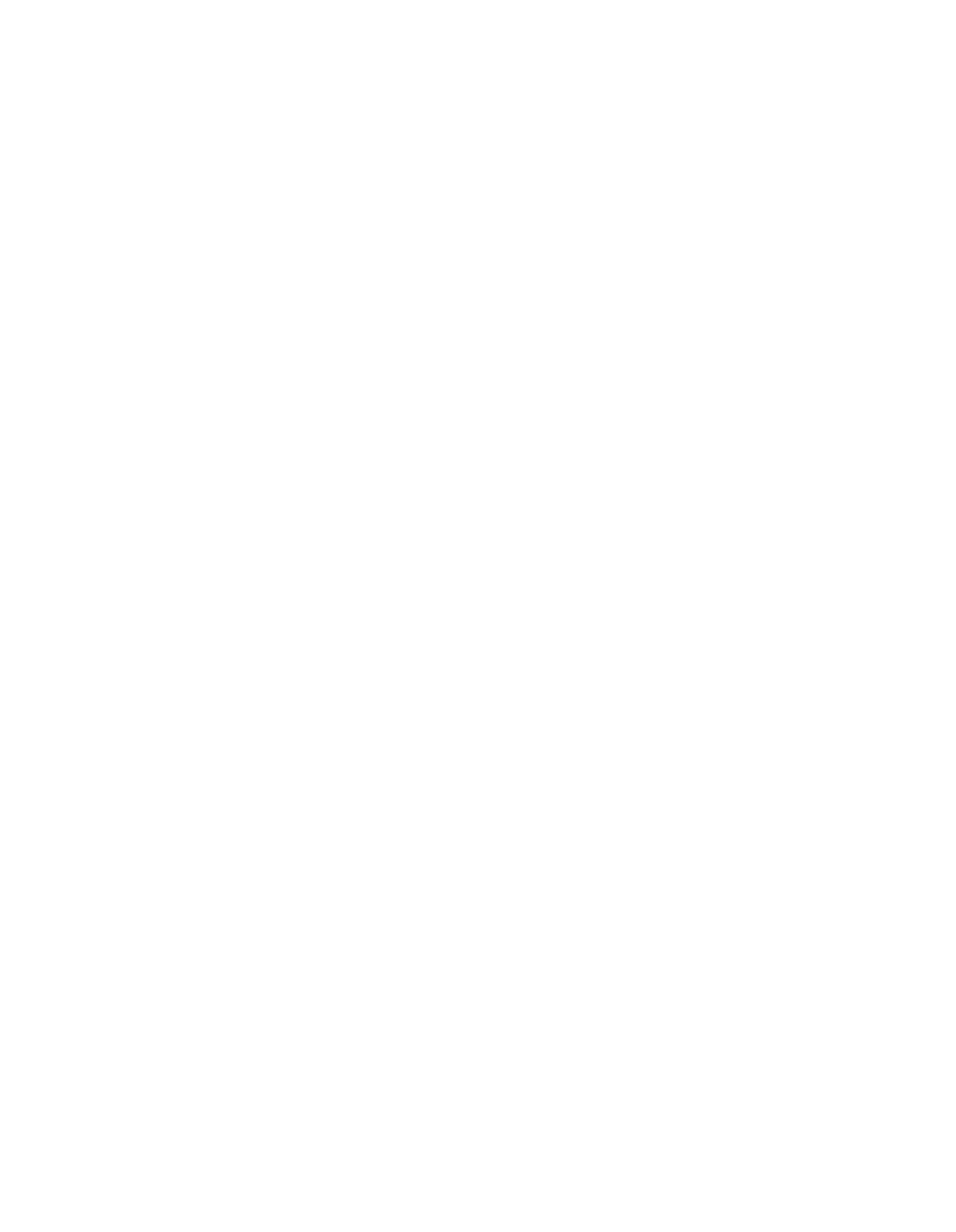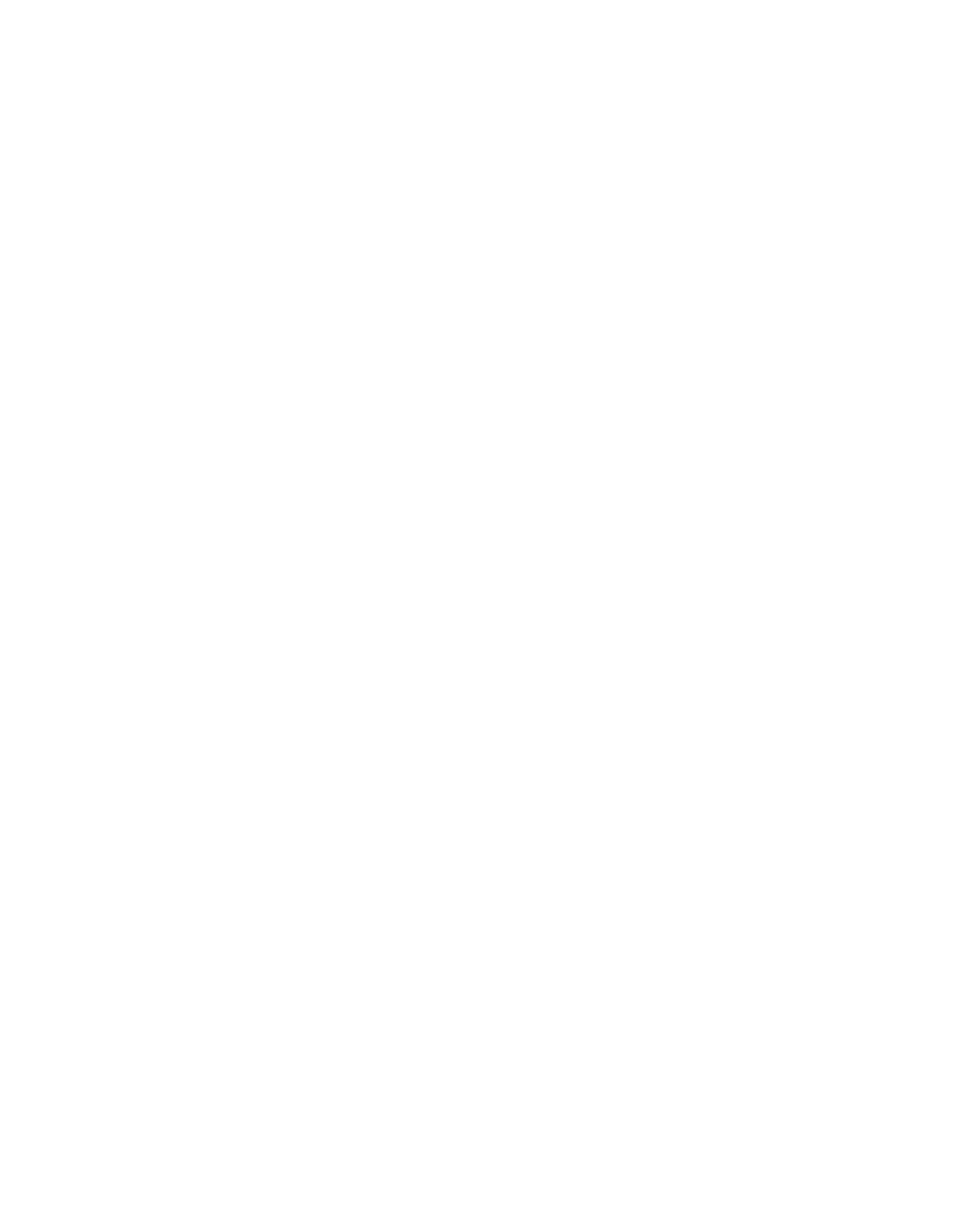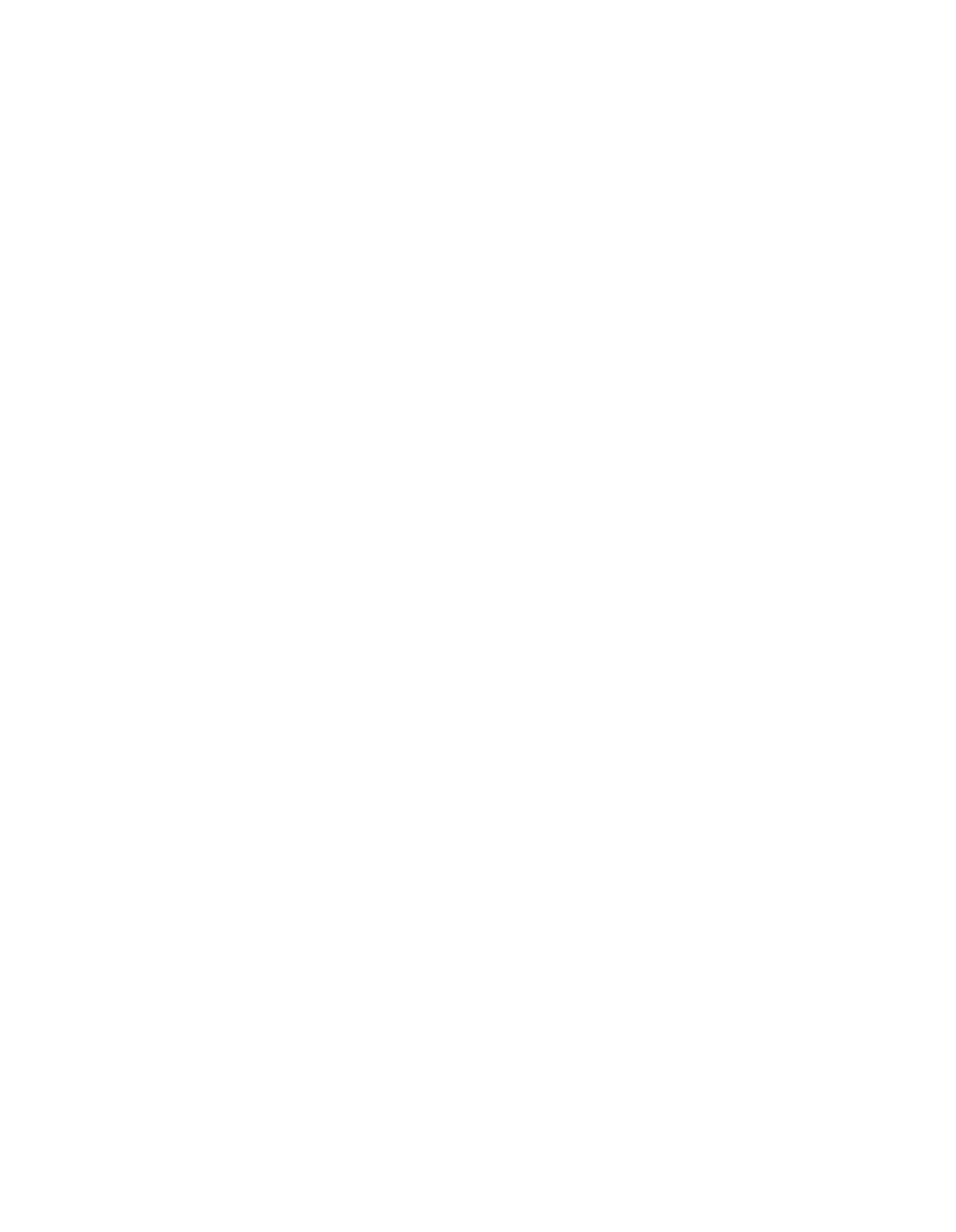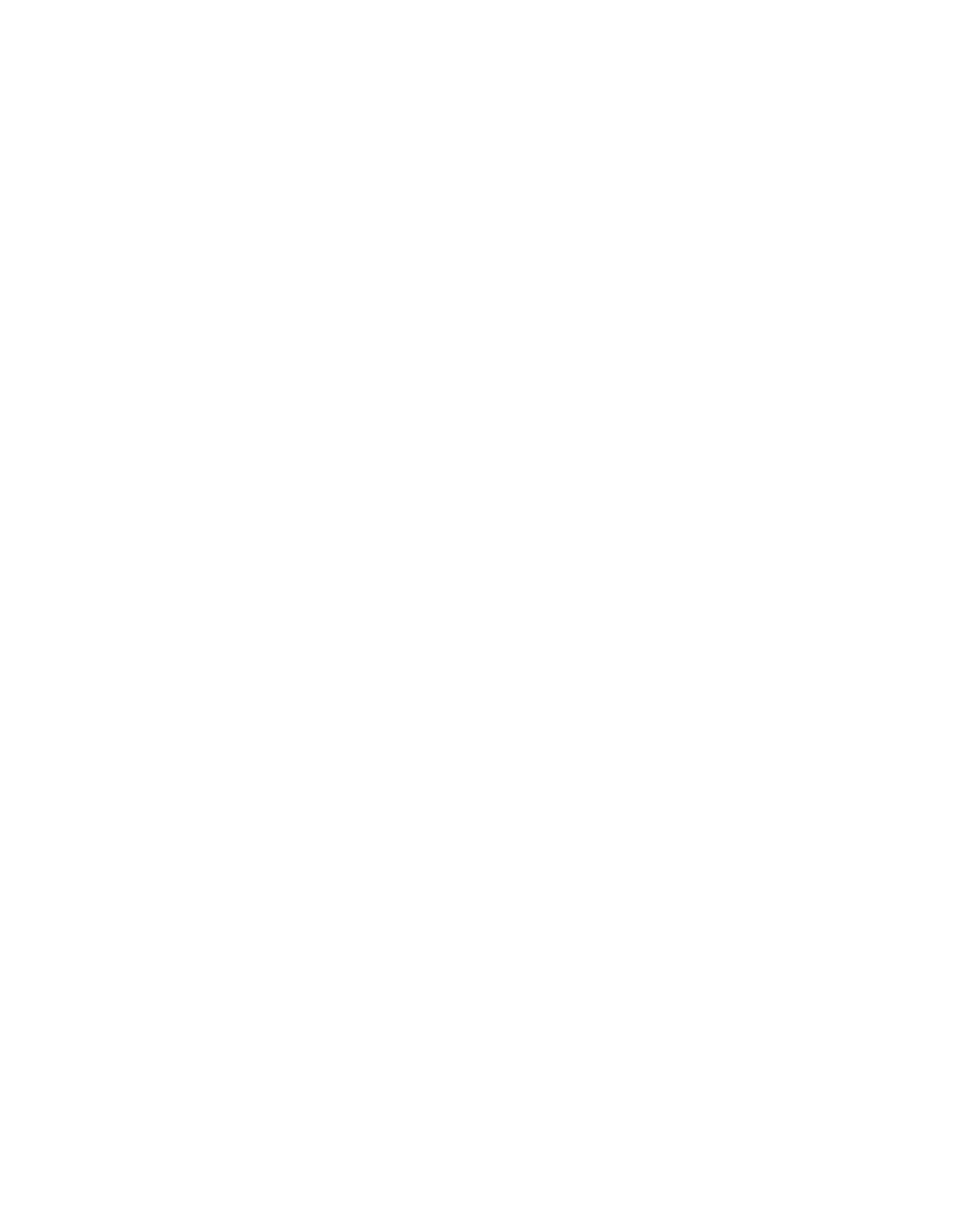BEFORE THE
ILLINOIS POLLUTION CONTROL BOARD
~
27
2005
STATE
OF ~
POjI~ti~~
Controi Board
iN THE MATTER OF:
)
)
PROPOSED NEW AND UPDATED RULES
)
FOR MEASUREMENT AND NUMERICAL
)
R 03-09
SOUND EMISSIONS
STANDARDS
)
(Rulemaking
-
Noise)
~
I
AMENDMENTS TO
35
ILL. ADM. CODE
)
9O1AND91O
)
Comments
of
Dr. Paul Schomer, Ph.D., P.E.
Schomer
and Associates,
Inc.
I. Introduction
These comments focus on Illinois
Pollution Control Board’s (IPCB) proposal in this proceeding
to amend the noise measurement requirements.
They address five specific areas:
1.
Common errors made by those inexperienced in the science ofnoise measurement
2.
The implications ofthese errors for valid noise measurement and Board decision-
making.
3.
How A-weighted measurements defeat many ofthe benefits of the IPCB rules,
and how they work to the disadvantage of those impacted by noise.
4.
The importance ofspecifying procedures for noise measurement and the limited
value ofmeasurement equipment manufacturer instructions.
5.
The importance ofensuring that noise measurement is performed by qualified
professionals.
II. Common errors made by those inexperienced in the
science ofnoise measurement
A.
Errors in
measuring and/or accounting for the background.
The lay person does not understand or necessarily properly hear the background.
In one case in
Illinois, the complainant worked in an automobile body repair shop and had perhaps lost some of
his high-frequency hearing.
The complaint centered on air conditioner noise.
Complainant
alleged a nuisance violation ofthe IPCB rules and corroborated his complaint with
measurements made using
a Radio Shack sound level meter (SLM).
He measured an A-
This Document Has Been Printed on Recycled Paper
weighted level that registered in excess of44
dB, and used this measurement to allege a violation
ofthe
IPCB nighttime rules for noise emitted from
a Class
B to a Class A land use.
I was
retained by the defendant to make measurements in accordance with the IPCB rules.
The
octave
band measurement showed that:
1.
The air conditioner noise was within the IPCB
limits, and
2.
The
“offending” noise was insect noise at night in the 2 and 4 kHz octave band.
It is possible that the
complainant had
a hearing loss and could not hear the insect noise well
enough and/or that he was so focussed on the air conditioner noise that he ignored all else.
Absent the defendant hiring a professional and taking measurements according to procedures
designed to distinguish background noise, the decision-maker in that case would have been
misled by the complainant’s purported measurements.
B.
Errors in measurement caused by wind-induce noise
The lay person does not understand the role that wind-induced noise makes on SLM
measurements.
In an out-of-state lawsuit, plaintiffs made measurements using
a Radio Shack
SLM and alleged that impulse noise levels, maximumfast, frequently exceeded 80
dB(A).
Figure
1
shows the A-weighted maximumfast level versus wind gust speed for an SLM both
with and without a windscreen.
Winds were
5
to 10 mph on the day that plaintiffs made their
measurements.
The Radio Shack meters do not come with
a windscreen, have no provision for
adding
a windscreen, and do
not mention
a windscreen in the instructions.
As Figure
1
shows,
the alleged noise measurements were easily the result ofwind gusts.
100
—
90
~
80
.
NO
Windscreen
~ With Windscreen
70
x
(5
~
60
50
0
5
10
15
20
25
Figure
1.
Wind noise versus wind
speed for the conditions indicated.
Max Wind Gust (mph)
2
This Document Has Been Printed on
Recycled Paper
C. Errors
caused by microphone placement
The layperson does not understand the role that reflecting surfaces have on noise measurements.
In an out-of-state lawsuit, plaintiffs made measurements using a Radio Shack SLM and alleged
excessive noise levels.
Forone measurement, the meter was set on the front porch, and in
another case the meter was set on a patio
table.
The Radio
Shack instructions did not adequately
address the
significance ofmeasuring in these different situations, thus the lay person had no
knowledge that
on
a porch, especially in the lower frequency bands, the reflections from walls
and floor will increase the measured sound level by
0 to
18
dB.
III. The
implications ofthese errors for valid noise measurement and Board decision-
making.
How is the
IPCB
to
know
that measurements alleged to originate from an
air
conditioner actually
have their source
elsewhere in the ambient environment?
How is
the Board
alerted to the
presence ofother ambient noise sources? If alerted to the issue, how is the Board to separate
wind-induced noise from real noise--after the
fact?
Wind in Illinois
is such that it is virtually
impossible
to make noise measurements without a windscreen.
How is the Board
to evaluate
microphone placement--after the fact?
What is the “correction”
to apply for a poor choice of
microphone placement?
Is it 3
dB,
6
dB,
12 dB, or even 18dB?
What effect
does the
electronic
noise floor ofthe
Radio Shack SLM have on the efficacy ofthe measurements?
The noise floor
is specified as 50
dB, so it is unlikely that it is low enough to measure the nighttime level of44
cIBA.
Given these manifold problems (the above are just
a few examples), it is my opinion that
purported evidence ofnoise emissions measuredby
a lay-person using
a Radio Shack or any
other handheld A-weighted measuring device
is inherently unreliable and may not even be “in
the ball park” in terms ofproviding the Board
with a sense ofnoise levels in a nuisance case.
The presumption that the Board review process can elicit any problems in such measurements is
a precarious basis for rejecting the adoption ofexplicit noise measurement standards for nuisance
noise cases.
IV.
How A-weighted measurements defeat many ofthe benefits of the IPCB
rules and
actually work to the disadvantage of those impacted by noise.
Allowing
a
lay
person
to make, hand-held,
A-weighted measurements
does
a
disservice
to the
rules and to the noise receiver.
There is
a trade-offbetween complexity ofrules
and efficacy of
the regulations.
The Illinois rules are more complex than some other state rules, but, as a result,
are more useful
and protective.
Manyjurisdictions use
a simple A-weighted measure for their
limit.
This
is less protective because it basically ignores the low and high
frequencies relative to
the middle frequencies, and because correction for the ambient can lead to substantial errors in
results.
Table
I list the Illinois nighttime
C to A limits, the A-weighting for each respective
octave band, and the resulting A-weighted limit by octave band.
Forthis situation, 51
dB(A) is
the “screening” limit, but it is only really applicable to
a broadband source that has most of its
energies in the middle-frequency bands.
Ifthe actual source exists only in one octave band, then
the fourth row in Table
I gives the amount
by which the A-weighted screening tool fails
to
3
This Document Has Been Printed on
Recycled Paper
assess the true IPCB limit.
Table 2
shows that essentially the same result ensues for the
nighttime
B to A limits.
In both cases, simple, A-weighted screening fails to detect the spectrum
of true noise, and thus,
in some situations, true noise problems, by the amounts shown in line
4
of the tables, the “limit difference” line.
Band
31 Hz
63 Hz
125 Hz
250 Hz
500 Hz
1kHz
2 kHz
4kHz’
8 kHz
Limit
69
67
62
54
47
41
36
32
32
A-weighting
-40
-26
-16
-9
-3
0
1
1
-1
A-weighted limit
29
41
46
45
44
41
37
33
31
Limit
difference
22
10
5
6
7
10
14
18
20
Table
1.
Nighttime C to A fiat- and A-weighted limits.
The fourth
row contains the difference
between the 51
dB(A) “screening” value and the corresponding A-weighted octave-band limit
values.
Band
31 Hz
63 Hz
125 Hz
250 Hz
500 Hz
1kHz
2 kHz
4 kHz
8 kHz
Limit
63
61
55
47
40
35
30
25
25
A-weighting
-40
-26
-16
-9
-3
0
1
1
-1
A-weighted limit
23
35
39
38
37
35
31
26
24
Limit
difference
21
10
6
6
8
9
13
18
21
Table
2.
Nighttime B to A flat- and A-weighted limits.
The fourth row contains the difference
between the 44 dB(A)
“screening” value and the corresponding A-weighted octave-band limit
values.
In one case
outside Illinois, the measured
factory
noise and ambient noise both measured about
the same A-weighted level.
So “correcting
for the ambient” left no significant factory noise.
However, octave-band measurements showed that the ambient bird noise was at I to 2 kHz while
the factory fan
noise was at
125 to
500 Hz.
Under the Illinois rules, the factory noise was
excessive and easily separable from the ambient.
But a simple “A-weighted”
measurement
would totally fail
to reveal this.
Because measurements made with
simple,
hand-held instruments
providing only A-weighted
measurements fail to address the spectrum
of octaves covered under the Illinois noise standards,
they create a misleading picture ofnoise emissions and the contribution ofindividual noise
sources.
To the extent that the Board
allows such evidence into the record without requiring a
party to demonstrate its accuracy under the same
standards applied to prove numeric violations,
the Board’s entire decision-making process in
a nuisance case may be tainted by misleading
information.
V. The importance ofspecifying procedures for noise measurement and the limited value of
measurement equipment manufacturer instructions
Standards
exist so that within a reasonable
degree
ofscientific certainty,
two
people can
make
the same measurement on the same source
at approximately the same location and achieve the
same result within a
stated tolerance.
The measurement is then replicable
and verifiable.
Use of
4
This Document Has Been Printed
on Recycled Paper
standards
is fundamental to noise measurement.
If one party does not use standard procedures
and standard equipment, then there is no possibility to
scientifically state a tolerance to the
measurement.
In the area ofnoise, consensus standards are readily available for instrumentation
(e.g., ANSI S 1.4), for general measurement procedures (e.g., ANSI S 1.13), and for short-term,
background-corrected measurements with an observer present (e.g., ANSI S 1.9
Part 3).
Unless
these Standards are
followed, the
IPCB has no valid scientific method by which to assess the
accuracy of data submitted to it.
Manufacturer’s instructions are no substitute
for clearly stated regulatory standards, such as those
currently contained in the Illinois
EPA’s regulations at 35111. Adm. Code
951
and now proposed
to be incorporated in
Board
regulations
but
not
applied in nuisance cases.
As discussed above,
the “instructions” accompanying a Radio Shack SLM do not address many key factors affecting
noise measurement.
The meter does not meet the ANSI (or fEC) requirements, and, as noted
above, does not even include
a windscreen.
What good is it to follow
such “instructions.”
While
it is certainly good practice to follow the manufacturer’s guidance and instructions, to my
knowledge, no manufacturer’s instruction manual
comes close to providing the procedures and
information given in ANSI Si .13 and S 12.9 Part3,
and incorporated in theproposed Part 910 of
the Board’s rules.
In my opinion, the Board should use this rulemaking to make the standards for accurate
measurement
clear
—
forboth numeric and nuisance cases.
It is not enough to state that the
Part
.910 rules can be looked to as guidance
—
but the only requirement in
a nuisance case is to follow
“manufacturer’s instructions.”
VI.
Qualifications for noise
measurement professionals
The
Board has
viable
options
in
terms
of identifying
qualified
noise
professionals.
The
most
certain choice is
to
require that measurements be supervised by
an individual who is
a Member,
Board
Certified, of the Institute of Noise Control Engineering of the USA,
Inc.
(INCE/USA).
INCE/LJSA
is
a non-profit
technical
society
(IRS
509
(c)
(6))
dedicated
to
the
furtherance
of
noise
control
engineer.
The
INCE/USA
business
office
is at Iowa
State University.
About
25
percent
of the
INCE/USA
membership
are
Board
Certified.
Certification requires
education,
several years
of experience, passing a rigorous
8-hour exam, and periodic professional
activities
for maintaining
Certification.
The
following
is
from
the
INCE/USA
By
Laws
(Annex
A
contains a bit more detailed information):
25.
Board Certification
in
Noise
Control Engineering
I.
An
applicant
for
board
certification
shall
be
enrolled
on
the
roster
of
the
Institute
as an INCE Member.
2. An applicant shall be ofgood moral character, shall furnish evidence of eight or
more
years of practical
experience
in
the
field of noise
control engineering,
and
shall
pass
the
eight-hour
ThJCE
Professional
Examination
to
demonstrate
competence in the field of noise control engineering.
5
This Document Has
Been Printed on Recycled Paper
3. A Certification Board, comprised of INCE Members, Board
Certified, shall be
appointed
by the
INCE Board of Directors
to
approve
all
applications for board
certification.
4.
The
Board
of Directors
shall
establish
requirements
for the maintenance
of
board certification by the Institute.
The
requirements
for
becoming
an
INCE/USA
Member,
Board
Certified
insures
that
the
individual
understands
the
physics
and
mathematics
of acoustics
along
with
the
engineering
methods ofnoise measurement, control, and mitigation.
As
a lessor
option,
the
Board could require
only that the person
supervising the
measurements
be:
(1) a member of INCE/USA (see attachment for INCE
membership information) and/or (2) a
full
member
of
the
Acoustical
Society
of
America
(ASA)
(see
Annex
B).
With
such
a
requirement,
it is likely
that the
individual has
some working knowledge
of the mathematics
of
acoustics
and
of acoustical measurements.
Individuals
who
are
members
of INCE/USA
will
have their focus
on noise issues while
full members
of the ASA span
broad areas
from musical
acoustics,
through
speech
and hearing, to
underwater
acoustics, but
they also include
members
interested in noise.
A variant
on this lessor
option would
be
to
require
that
measurements be
conducted by
a
firm
that
is
a
member
of the
National
Council
of Acoustical
Consultants
(NCAC)
(see
attached
NCAC Canon ofEthics).
From the above, it should be clear that the Board has viable options for:
1.
Being
certain
of
the
qualifications
of
those
who
perform
measurements
(i.e.,
individual supervising measurements is an INCE/USA Member, Board Certified)
2.
Screening
those
who
perform
measurements
(i.e.,
individual
supervising
measurements is
a member of INCE/USA or
a full member of ASA
and/or the
firm
is
a member of NCAC).
6
This Document Has Been Printed on Recycled Paper
VII. CONCLUSIONS
From the above
it is clear that:
1.
Given the many ways that acoustical measurements can be done incorrectly, especially by a
lay person using non-standard
equipment,
it
is not possible to see how the Board can use any
lay-person-measured A-weighted levels with a reasonable degree of scientific certainty.
2.
The use of lay person
measured data
creates
an added burden
for the
defendant of showing
the lay
person’s
errors
in collecting
and interpreting those
data.
This
added burden
should
not exist since the likelihood of lay person measurements being accurate within a reasonable
degree of scientific certainty is practically zero.
3.
The
IPCB
should
disallow
the use of simple,
hand-held,
A-weighted measurements
rather
than encourage them because they do a disservice both to the efficacy of the rules and to the
protection of those truly impacted by noise.
4.
Standards
are
readily
available
for
instrumentation
(e.g.,
ANSI
Sl.4),
for
general
measurement
procedures
(e.g.,
ANSI
SI.13),
and
for
short-term,
background-corrected
•
measurements with
an observer present (e.g., ANSI
S1.9 Part 3).
The Board should require
•
•
the
use. of
these
standards
for
all
measurements.
There
really
is no
substitute
for
clear,
uniform standards.
-
5.
The
Board
should
apply
one
of the
following
two
options
for
objectively
assessing
the
qualifications of those who perform acoustical measurements.
a.
To
be
certain of the
qualifications
of those
who perform
measurements
the
Board
should
require
that
the
individual
supervising
measurements
be
an
INCE/USA
Member, Board Certified.
b.
To
screen
those who perform
or
supervise
measurements the
Boards
should
require
that these
individuals be
a member
of INCE/USA
or a
full
member ASA
and/or that
the
firm
be a member of NCAC.
Date:
May
26,
2005
Submitted
by:
G~a~L
IcLr~~
Dr. Paul Schomer, Ph.D., P.E.
Schomer and Associates, Inc.
7
This Document Has Been Printed on Recycled Paper
ANNEX A
INCE/USA BOARD
CERTIFICATJON IN NOISE
CONTROL ENGINEERING
An
fl’~CE
Member who
desires
Board
Certification
in Noise
Con.trol
Engineering
by
the
Board
of Directors
of
~NCE/1JSA
shall:
a)
be enrolled on
the roster of the Institute as an
INCE Member;
b)
complete and
sig1~an
application for Board Certification in Noise
Control Engineering, affix
a
recent head
and
shoulders
photograph
and
mail
to
the
INCE
Membership
Secretariat
together
with
the
fee
stated
on
the
application
in USD by
check or credit card to cover
processing; the
information required by
subparagraph (d) below
must be presented in complete
and verifiable detail;
c)
request
five personal
references
familiar
with
the
applicant’s professional
qualifications
and
experience
attest
to
the
applicant’s
experience
in
the
field
of
noise
control
engineering
by
completing
INCE
confidential
reference
forms;
the
forms
shall be
mailed
directly to the
~NCEMembership Secretariat where
they
will be treated
in strictest confidence.
Of the five references, at
least three of the references must be INCE members,
including two
members
who
are
Board
Certified.
No
more
than
two
references
from
a
single
firm
will
be
accepted,
and
individuals for whom
the
applicant has
completed
a
confidential
reference
form
(on
an INCE
Board Certification
application) are
not eligible
to serve. It
is
the
responsibility of the
applicant to ensure
that the
individuals
chosen
as
confidential references meet these requirements
and that
all
five reference
forms
are
returned to the
INCE Business
Office by the
filing deadline;
d)
by
means
of an
updated
curriculum vitae andlor other appropriate documentation, furnish
evidence
of at
least
eight
(8)
years
of
experience
in
noise
control
engineering;
experience
may
involve
research,
teaching,
professional practice,
or any combinations thereof, and
may
include
the
control of noise
(and associated
vibration)
produced
by
commercial products,
transportation vehicles or
industrial plants;
noise
(and associated
vibration)
in
buildings;
the
development
of
special
instrumentation,
measurement
and
analysis
techniques,
facilities
and
equipment;
teaching,
consulting,
research
and supervision
of professional activities
in noise
control engineering.
A
baccalaureate
degree
from
a
college
or
university
which
has
an
ABET-
or
ACSA-
accredited
engineering
or
architecture program maybe counted as
equivalent to three (3) years of experience.
Credit of an
additional
one year
may be granted for satisfactory completion
of a
postgraduate
acoustics-related
degree from
an
accredited
college or
university graduate
program;
e)
complete
the
INCE
Professional
Examination
with
a
satisfactory
grade
as
determined
by
the
INCE
Certification
Board;
the
INCE
Professional
Examination
evaluates
the
applicant’s
detailed
knowledge
and
experience
in noise
control
engineering
applications, as
well
as
the
ability
of the
applicant
to assume
senior-level
professional responsibilities
in the practice of noise
control
engineering; the
examination
is of eight
hours
duration.
When the requirements
of paragraphs b), c),
d)
and
e) above are
complete,
the
Certification
Board
chaired
by
the
INCE
Vice
President-Board
Certification
shall
review
each
application
dossier
and
vote
on
acceptance
or
rejection of the application.
Upon
a
majority vote
of the
TNCE
Certification Board for acceptance of an application,
the
Certification Board’s recommendation will be
forwarded
to the
INCE
Board of Directors for final approval as a
Board Certified Member.
The ThJCE President will advise
the
successful applicant in writing of his/her
board certification.
Members of
the
Institute
who
are
Board
Certified
in
Noise
Control
Engineering
may
use
the
abbreviation
“lNCE.Bd.Cert.”
following
their
names
in
professional
correspondence,
on
calling
cards
and
in
curriculum
vitae.
No
other
abbreviations are authorized.
8
This Document Has Been Printed on Recycled Paper
ANNEX B
ACOUSTICAL
SOCIETY
OF
AMERICA
REQUIREMENTS
FOR
FULL
MEMBERSHIP
“Full Member:
Any
individual
working
in
acoustics
or related
field,
with
an
academic
degree
with
a
specialization
in
acoustics
or
related
field,
or
with
equivalent
professional
work
experience
in
acoustics,
may
apply
for
full
Membership.”
Note:
Membership application requires the signatures of
two
references who are full members or
fellows
of
the
Acoustical
Society
of
America.
The
application
requests
information
on
professional experience and contributions to the field of acoustics.
9
This Document Has Been Printed on Recycled Paper
Membership
Structure and Qualifications
Institute of Noise Control Engineering
I.
GENERAL
This
statement
describes the
membership
structure of
the Insti-
tute
of
Noise
Control
Engineering
of
the
United
States
of
America,
Inc.
(INCE/USA).
The
qualifications
and
require-
ments for membership
are
defined,
as well
as
the
procedures to
be
followed.
Individuals
having
professional responsibilities or
an interest in noise control
engineering
at
any level
may partici-
pate in the
activities
of the
Institute.
One of the goals
of the In-
stitute
is to include
within
the
organization a broad representa-
tion of individuals
who
have a professional interest
in research,
in teaching, and
in engineering applications
involving
all
aspects
of
noise
control.
The
roster
of
the
Institute
includes
INCE
Members,
INCE Distinguished
International Members and TNCE
Associates.
An
individual
interested
in full
INCE
membership
first
enrolls
as an INCE
Associate, and
then makes
application to
become
an
INCE
Member.
An
INCE
Member
may
also
be
Board
Certified
in
Noise
Control
Engineering by
the
Board
of
Directors
of the
Institute.
TNCE
Distinguished
International
Members
are
elected
from
among
distinguished
noise
control
engineers who
reside
outside the
U.S.A.
INCE Associates may
remain in that status ifthey
do
not choose to apply
for full INCE
membership.
The
two
basic
requirements
for
an
individual
to
advance
from
~NCE Associate
status
to
full
membership
in
TNCE/USA are
that
the
applicant:
(1) have earned a baccalaure-
ate (or equivalent four-year
academic degree), or higher degree,
from
a
qualified program
in engineering,
physical
science,
or
architecture
offered
by
an
accredited
university
or
college,
or
have had
at
least
one sole-author paper or
two
first-author papers
published
in or
accepted
for
publication
in
the
Noise
Control
Engineering .lournal;
and
(2) have instructed, or have enroled
in
and
achieved
a
grade
of
“B”
or
better
in,
at
least
one
full-
semester (i.e. three credit
or
more) course
of instruction offered
by
an
accredited
university
or
college
devoted
to
the
physical
principles of acoustics,
or
have
demonstrated
at
least five
years
experience
in
noise
control
engineering
involving
research,
teaching, professional practice or any
combination thereof.
Both
requirements
must be
satisfied.
A
satisfactory
grade
on
the
INCE
Fundamentals
Examina-
tion,
or
a
grade
of
“B”
or
better for completion
of a
course, ap-
proved
by
the
Membership
Committee, on
the
fundamentals
of
noise
control
engineering, may be
considered
sufficient for elec-
tion to membership
in lieu
of
one
or
both
of the
basic
require-
ments above.
II.
INCE ASSOCIATE
To become an INCE Associate,
the applicant shall:
a)
affirm an interest in noise
control engineering;
b)
complete
and
sign an
INCE
Associate
form, pay
the annual
INCE Associate fee
as prescribed by the ITNCE bylaws, and
send
the form and payment to the Membership Secretariat, Institute of
Noise
Control
Engineering,
212
Marston
Hall,
Iowa
State Uni-
versity,
Ames,
IA
50011-2153.
Telephone:
(515)294-6142;
FAX:(515)294-3528;
e-mail:
ibo@inceusa.org.
Upon
receipt
and
review
of
the
application
by
the
1TNCE
Membership Secretariat,
the
applicant will be notified
in writing
of his/her acceptance as
an INCE Associate.
III.
INCE MEMBER
To
become an INCE Member, the applicant shall:
a)
be
enrolled
on the roster of the
Institute as
an INCE Associ-
ate;
b)
be of good
moral character;
c)
complete
and
sign
an INCE Member
application
form
and
mail to the
INCE Membership Secretariat together with any sup-
porting
material
the
applicant
wishes
to
submit
(e.g.,
current
curriculum
vitae,
description
of
acoustics
courses
taken,
etc.);
the
application
form
requires
that
an
1NCE
Member sign
the
form as
the
applicant’s endorser;
the
applicant
is responsible for
obtaining this
signature.
Based
on
the
information
contained in 3)
above, the
INCE
Board
of Directors
or a
committee
or
board designated by
the
Board of Directors will
approve
all
applications
for member-ship
based
on
the
basic requirements
stated in section
L
Applicants
who
are
considered
deficient by
the
Membership
Committee in
satisfying the
two
basic requirements of section
I
shall be
given
the
opportunity to take a two-hour INCE
Fundamentals Exami-
nation.
The
purpose of the
examination
is to evaluate
the appli-
cant’s knowledge of the
fundamental principles of acoustics
and
noise
control
engineering.
A
satisfactory
grade
on
the
INCE
Fundamentals Examination,
or a
grade of
“B”
or
better for com-
pletion of a
course, approved by
the Membership Committee, on
the
fundamentals
of noise
control
engineering,
may
be
consid-
ered
sufficient for
election to membership in lieu
of one or both
of the
basic requirements
stated
in Section
1.
Upon election
to full Member status by
the
INCE
Board of
Directors,
the
TNCE
Membership
Secretariat
will
inform
the
applicant in writing of his/her
election.
Duly
elected
full Mem-
bers of the
Institute may
use
the
letters
“ITNCE”
following their
names in professional correspondence,
on business cards,
and in
curriculum vitae.
No
other abbreviations are
authorized.
IV.
BOARD
CERTiFICATION
IN
NOISE
CONTROL
ENGINEERING
An
INCE
Member
who
desires
Board
Certification
in Noise
Control
Engineering
by
the
Board
of
Directors
of INCE/USA
shall:
a)
be enrolled
on
the
roster of the
Institute as
an INCE Mem-
ber;
b)
complete and
sign
an
application
for Board
Certification in
Noise
Control
Engineering,
affix
a
recent
head
and
shoulders
photograph and
mail
to
the
INCE Membership
Secretariat to-
gether with
the fee
stated
on
the
application
in USD by
check or
credit card
to cover processing; the
information
required
by sub-
paragraph (d)
below must be presented
in complete
and
verifi-
able
detail;
c)
request five personal references
familiar with the
applicant’s
professional
qualifications
and
experience
attest
to
the
appli-
cant’s
experience
in
the
field
of
noise
control
engineering
by
completing
1NCE
confidential
reference
forms;
the
forms
shall
be
mailed
directly to the
INCE
Membership
Secretariat where
they
will be
treated
in
strictest
confidence.
Of
the
five refer-
ences,
at least
three
of the
references
must
be
1NCE
members,
including two
members who
are Board
Certified.
No
more than
two references
from
a single firm
will be
accepted, and individu-
als
for whom the
applicant has
completed
a
confidential refer-
ence
form
(on
an INCE Board Certification
application) are
not
eligible to serve.
It
is the responsibility of the
applicant to ensure
that the
individuals
chosen
as
confidential references
meet these
requirements and
that
all
five reference forms
are
returned to the
INCE Business Office by the
filing deadline;
d)
by
means
of an
updated curriculum
vitae and/or
other ap-
propriate
documentation,
furnish
evidence
of at
least
eight
(8)
years of experience in noise
control
engineering; experience may
involve
research, teaching,
professional practice,
or any combi-
nations thereof, and
may
include the
control of noise
(and asso-
ciated
vibration) produced
by
commercial
products, transporta-
tion vehicles or industrial plants; noise
(and associated vibration)
in buildings;
the
development
of special
instrumentation, meas-
urement
and
analysis
techniques,
facilities
and
equipment;
teaching,
consulting,
research
and
supervision
of professional
activities
in noise
control
engineering.
A
baccalaureate
degree
from
a
college
or
university
which
has
an
ABET-
or
ACSA-
accredited
engineering
or
architecture program may
be
counted
as
equivalent to three (3) years ofexperience.
Credit of an
addi-.
tional one
year
may
be granted
for satisfactory
completion
of a
postgraduate acoustics-related
degree
from an
accredited college
or university graduate program;
e)
complete the
INCE
Professional
Examination
with
a
satis-
factory
grade
as
determined
by
the
TNCE
Certification
Board;
the
INCE
Professional
Examination
evaluates
the
applicant’s
detailed knowledge and
experience
in noise
control
engineering
applications,
as
well
as
the
ability of
the
applicant
to assume
senior-level
professional responsibilities in the
practice of noise
control
engineering; the examination
is of eight hours
duration.
When the requirements
of paragraphs b),
c),
d) and
e) above
are
complete,
the Certification
Board
chaired
by
the ~NCEVice
President-Board
Certification shall review
each
application dos-
sier and
vote on
acceptance or rejection of the
application.
Upon
a
majority vote
of the
INCE
Certification Board
for acceptance
of an
application, the
Certification
Board’s recommendation
will
be
forwarded
to the
TNCE Board of Directors
for
final
approval
as a Board
Certified Member.
The INCE
President
will advise
the
successful
applicant in
writing of his/her
board certification.
Members of the
Institute
who
are
Board
Certified
in Noise
Control Engineering
may
use
the
abbreviation “rNCE.Bd.Cert.”
following their
names in pro-
fessional
correspondence,
on
calling
cards
and
in
curriculum
vitae.
No
other abbreviations are authorized.
V.
INCE DISTINGUISHED INTERNATJONAL MEMBER
The status of
INCE
Distinguished International
Member is
con-
ferred by
the
1NCE
Board
of
Directors upon
eminent
acousti-
cians who
reside outside the
U.S.A.
This
distinguished, honor-
ary
status
is
conferred
upon
individuals
who
have
personally
made
extraordinarily
significant
contributions
to
the
theory
and/or practice of
noise
control
engineering.
Nominations
are
submitted
by a committee
of peers who
are
active in noise con-
trol engineering in the
country of the
proposed nominee.
Appli-
cations not being accepted, the
only path to INCE Distinguished
International
Member
status
is
by
peer
group
recognition
and
nomination.
Nonetheless,
full
Membership
in
INCE/USA,
as
well
as
Board
Certification
in
Noise
Control
Engineering,
is
available
to
all
individuals
who
meet
the
requirements of Sec-
tions III
and
IV
above,
regardless
of nationality or
country of
residence.
TNCE
Distinguished
Corresponding
Members
are
entitled
to
use
the
abbreviation
“INCE.Dist.Intn’l.mem.”
fol-
lowing
their
names
in professional
correspondence,
on
calling
cards
and in curriculum vitae.
VI.
ANNUAL
FEE
The 2004
annual
fee
for INCE
Associates, Members and Distin-
guished International
Members is USS
95.
All receive
an
annual
membership directory,
Noise/News
International
(quarterly) and
Noise Control
Engineering Journal
(bimonthly).
Postal charges
for
delivery
outside the
U.S.A.
are
assessed
in addition
to the
USS
95
fee.
In
all
other countries,
it is US$25.00.
VU.
STUDENT ASSOCIATES
Full-time
students
enrolled
in
engineering, physics
or architec-
ture
at
a
college
or university
having
at
least
one
ABET-
or
ACSA-accredited
program,
may,
upon
completion
of the
appli-
cation
procedure of
Section
II above
and
submission
of certifi-
cation
that
they
are
enrolled
at
their
academic
institutions, be-
come INCE Associatesfor
an annual
fee
of $20
VIII.
EXAMINATION
FEES
There is no
fee for either the
INCE
Fundamentals
Examination
or
the INCE
Professional Examination when these examinations
are
taken
as
offered, which
is
at
least
once annually in conjunc-
tion
with
regularly-scheduled
NOISE-CON
conferences
or
INTER-NOISE congresses
held in North America.
Any
requests
for special
offerings
of INCE examinations
require
the
approval
of
the
INCE
Vice
President-Membership
or
the
1NCE
Vice
President-Board
Certification,
as
appropriate,
via
the
~NCE
Membership
Secretariat.
Such
special
offerings
require
that
there be
a
reasonable number of candidates to take the examina-
tions
at
the
proposed
time and
location.
In
addition,
candidates
for specially scheduled 1NCE exams will
be
required to prepay a
special
examination
fee
to defray
the
expenses
of preparing and
administering the
examinations.
MEMBERSHIP SECRETARIAT
Information
on
all
matters
relating
to
membership,
including
application
forms
for INCE Associates and INCE Members,
and
for
Board
Certification
in Noise
Control
Engineering,
may
be
obtained by contacting:
Membership Secretariat
Institute
of
Noise Control Engineering
212 Marston Hall
Iowa State University
Ames, IA 50011-2153, USA.
Telephone:
(515)
294-6142; FAX:
(515)
294-3528.
E-mail:
ibo®inceusa.org.
NATIONAL COUNCIL OF ACOUSTICAL CONSULTANTS
CANON OF ETHICS
PREAMBLE
Acoustical
consulting
is
an
important
and
learned
profession.
The
members
of the profession
recognize
that their
work has
a
direct and vital
impact on the quality
of life for
all
people.
Accordingly, the services provided by acoustical
consultants
require
honesty,
impartiality,
fairness
and
equity
and
must
be
dedicated to
the protection
of the
public
health,
safety
and
welfare
in the practice
of their profession.
Acoustical
consultants must perform
under
a
standard
of professional behavior which requires
adherence to the highest principles of ethical conduct
on
behalf of the public,
clients,
employees
and the
profession.
1.
Fundamental Canons
Acoustical
consultants,
in the fulfillment of their professional duties, shall:
1.
Hold paramount the safety, health
and welfare of the public in the performance of their professional duties.
2.
Perform services only
in areas
of their competence.
3.
Issue public statements only
in an objective and
truthful manner.
4.
Act in
professional matters for each client as faithful agents or trustees.
5.
Avoid improper solicitation of professional assignments.
II.
Rules
of
Practice
1.
Acoustical consultants shall hold paramount the
safety, health and welfare of the public in the performance of their
professional duties.
a.
Acoustical
consultants
shall
at
all
times
recognize
that
their
primary
obligation
is
to
protect
the
safety,
health,
property
and
welfare
of
the
public.
If
their
professional
judgment
is
overruled
under
circumstances where
the
safety,
health,
property
or welfare
of the
public
are endangered,
they
shall
notify
their client and such other authority as may
be appropriate
b.
Acoustical consultants shall approve only acoustical consulting
work which,
to the best of their
knowledge
and
belief,
is
safe
for
public
health,
property
and
welfare
and
in
conformity
with
accepted
standards.
c.
Acoustical consultants
shall not reveal facts, data or information
obtained in a
professional
capacity
without the proper consent
of the
client except
as authorized or required by law or these Guidelines.
d.
Acoustical
consultants
shall
not
permit
the
use
of
their
name
or
firm
nor
associate
in
business
ventures with any person or firm
which they have
reason to believe is engaging in fraudulent or
dishonest
business or
professional practices
e.
Acoustical
consultants having
knowledge of any alleged violation
of these Guidelines shall
cooperate
with
the proper authorities in furnishing such information or assistance as may be
required
2.
Acoustical consultants shall
perform services only
in the areas
of their
competence
a.
Acoustical
consultants
shall
undertake
assignments
only
when
qualified
by
education
or
experience
in
the specific technical fields involved
b. Acoustical consultants shall
not affix their signatures to
any plans or documents dealing with
subject
matter
in which they
lack competence nor to any plan or document not prepared under their direction
and
control.
NCAC Canon of Ethics
Page 2
c.
Acoustical
consultants
may
accept an
assignment outside
of their fields
of competence to
the
extent
that
their services
are
restricted to those phases of the project
in which they are qualified and to the extent that
they are
satisfied that all
other
phases
of such project
will be
performed
by
registered
or
otherwise
qualified
associates, consultants or employees, in which case they may then sign the documents for
the
total
project.
3.
Acoustical consultants shall issue public statements only
in
an objective and truthful manner.
a.
Acoustical consultants shall be objective and truthful in professional reports, statements or
testimony.
They shall include all relevant
and pertinent
information in such reports, statements or
testimony.
b.
Acoustical
consultants
may express
publicly a
professional opinion
on
technical
subjects
only when
that
opinion is founded
upon adequate knowledge of the facts and competence
in the subject matter.
c.
Acoustical consultants shall issue no statements, criticisms, or arguments on technical matters
which are
inspired
or
paid
for
by
interested parties,
unless they have
prefaced their
comments
by
explicitly
identifying
the interested parties
on whose
behalf they are speaking and by revealing the existence of any
interest
they
may have
in the matters.
4.
Acoustical consultants shall act
in professional matters for each client as faithful agents or trustees.
a.
Acoustical
consultants
shall
disclose
all
known
or
potential
conflicts
of
interest
to
their
clients
by
promptly
informing
them
of
any
business
association,
interest
or
other
circumstances
which
could
influence or appear to
influence their judgment of the quality of their services.
b.
Acoustical
consultants
shall not accept
compensation,
financial
or otherwise,
from
more
than
one
party
for services
on the same
project or for services
pertaining to the
same project,
unless the circumstances
are
fully disclosed
to,
and agreed to,
by all
interested parties.
c.
Acoustical
consultants
in
public
services
as
members
of a
governmental
body or department
shall
not
participate
in
decisions
with
respect
to
professional
services
solicited
or
provided
by
them
or
their
organizations
in private
acoustical consulting practices.
d.
Acoustical
consultants
shall
not
solicit
or
accept
a
professional
contract from
a
governmental
body
on
which a
principal or officer of their organization
serves as
a
member.
e.
Acoustical
consultants
shall
not
solicit
or
accept
a
professional
contract from
a
governmental
body
on
which a
principal or officer of their organization
serves as a member.
5.
Acoustical consultants shall avoid improper solicitation of professional assignments.
a.
Acoustical consultants
shall
not falsify or
permit
misrepresentation
of
their,
or their
associates,
academic
or
professional
qualifications.
They
shall
not
misrepresent
or
exaggerate
their
degree
of
responsibility
in
or
for
the subject
matter of
prior
assignments.
Brochures
or
other
presentations incident
to the
solicitation
of
assignments shall not misrepresent pertinent facts concerning
employees, associates, joint ventures
or past
accomplishments with the
intent and
purpose of enhancing their qualifications and their work.
b.
Acoustical
consultants
shall
not
offer,
give,
solicit
or
receive,
either
directly
or indirectly,
any
political
contribution
in
an
amount
intended to
influence the award
of a
contract by
public authority,
or which may
be
reasonably construed
by
the public
of having
the
effect
or intent to
influence the
award of a
contract.
They
shall
not
offer
any
gift
or
other
valuable
consideration
in
order
to
secure
work.
They
shall
not
pay
a
commission,
percentage
or
brokerage
fee
in
order to
secure
work except
to
a
bona
fide
employee or bona
fide
established commercial or marketing agencies retained by them.
CERTIFJCATE OF SERVICE
I, Patricia F. Sharkey,
an attorney, hereby certify that
I
have served the attached
Comments of Dr. Paul Schomer, Ph.D., P.E.,
upon:
Dorothy M. Gunn
Clerk of the Board
Illinois Pollution Control Board
100 West Randolph Street
Suite 11-500
Chicago, Illinois 60601
(Hand Delivery, Original
+
9 copies)
Howard
0.
Chinn
ChiefEngineer
Office of the Attorney General
188 West Randolph Street, 20~
Floor
Chicago, Illinois 60601
(U.S. Mail)
Thomas G. Safley
Hodge, Dwyer, Zeman
3150 Roand
Avnue
P.O. Box 5776
Springfield, IL
62705-5776
(U.S. Mail)
Robert
C. Wells
Wells Environmental Systems
2061
Gladstone
Wheaton. IL
60187
(U.S. Mail)
Marie Tipsord
Hearing Officer
Illinois Pollution
Control Board
100 West Randolph Street
Suite
11-500
Chicago,
Illinois 60601
(Hand
Delivery)
Kyle Rominger
Division of Legal Counsel
Illinois Environmental Protection Agency
1021 North Grand Avenue East
Post Office Box
19276
Springfield, Illinois 62794-9276
(U.S. Mail)
Robert A. Messina
General Counsel
Illinois Environmental Regulatory Group
3150 Roland Avenue
Springfield,
IL
62703
(U.S. Mail)
as indicated above, by hand delivery or by depositing
said document in
the United States Mail,
postage prepaid, in
Chicago, Illinois
on
May 27, 2005.
Patricia F. Sharkey
Mayer, Brown, Rowe & Maw
LLP
190 South LaSalle Street
Chicago,
Illinois
60603-3441
~~~aF.Sharke
THIS
DOCUMENT HAS BEEN
PRINTED
ON
RECYCLED
PAPER
